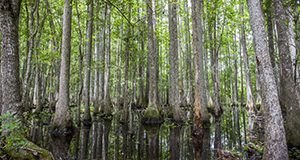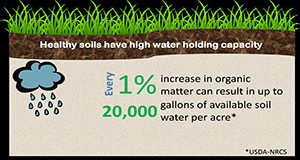Wetlands are often referred to as "nature's kidneys" because of their ability to remove pollutants from water via storage in the soil and vegetation, as well as through losses to the atmosphere. This 7-page fact sheet written by Jay Capasso, Lisa Krimsky, and Jehangir Bhadha and published by the UF/IFAS School of Forest Resources and Conservation provides a general overview of the function and structure of large-scale treatment wetlands and the services they provide.
http://edis.ifas.ufl.edu/fr419
Tag: Jehangir Bhadha
Raising Soil Organic Matter Content to Improve Water Holding Capacity
Just like a sponge, soils with high organic matter (OM) can absorb and hold water during rainfall events and deliver it to plants during dry spells. Water is increasingly becoming the most limited natural resource supporting agriculture, but growers can improve their water storage capacity by raising their soil’s OM content. This 5-page fact sheet demonstrates how soil OM content can help increase water holding capacity of soils and describes the laboratory procedure to measure WHC. Written by Jehangir H. Bhadha, Jay M. Capasso, Raju Khatiwada, Stewart Swanson, and Christopher LaBorde, and published by the UF/IFAS Department of Soil and Water Sciences, October 2017.
http://edis.ifas.ufl.edu/SS661

